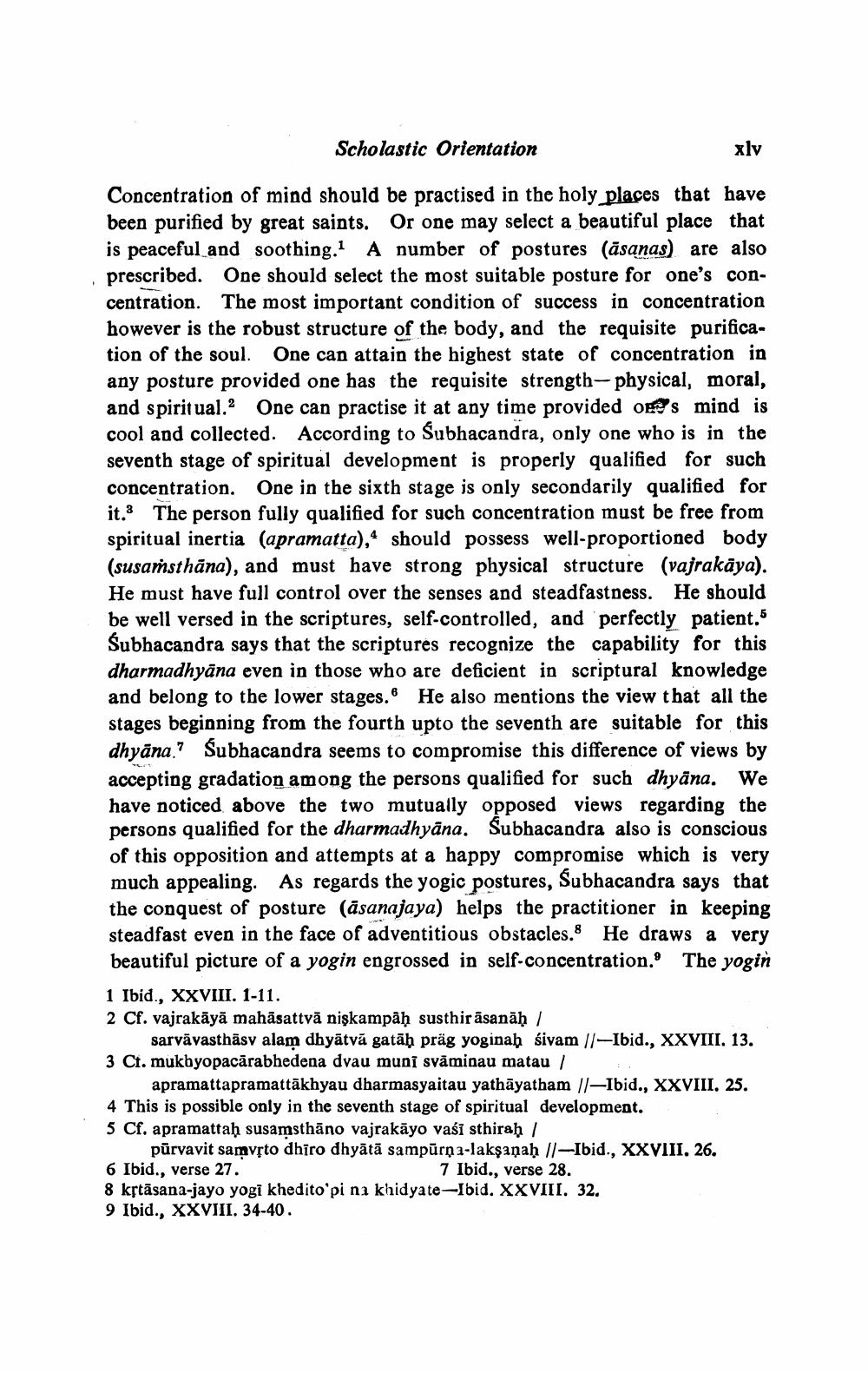________________ Scholastic Orientation xlv Concentration of mind should be practised in the holy places that have been purified by great saints. Or one may select a beautiful place that is peaceful and soothing. A number of postures (asanas) are also prescribed. One should select the most suitable posture for one's concentration. The most important condition of success in concentration however is the robust structure of the body, and the requisite purification of the soul. One can attain the highest state of concentration in any posture provided one has the requisite strength-physical, moral, and spiritual. One can practise it at any time provided s mind is cool and collected. According to Subhacandra, only one who is in the seventh stage of spiritual development is properly qualified for such concentration. One in the sixth stage is only secondarily qualified for it. The person fully qualified for such concentration must be free from spiritual inertia (apramatta),4 should possess well-proportioned body (susamsthana), and must have strong physical structure (vajrakaya). He must have full control over the senses and steadfastness. He should be well versed in the scriptures, self-controlled, and perfectly patient." Subhacandra says that the scriptures recognize the capability for this dharmadhyana even in those who are deficient in scriptural knowledge and belong to the lower stages. He also mentions the view that all the stages beginning from the fourth upto the seventh are suitable for this dhyana.? Subhacandra seems to compromise this difference of views by accepting gradation among the persons qualified for such dhyana. We have noticed above the two mutually opposed views regarding the persons qualified for the dharmadhyana. Subhacandra also is conscious of this opposition and attempts at a happy compromise which is very much appealing. As regards the yogic postures, Subhacandra says that the conquest of posture (asanajaya) helps the practitioner in keeping steadfast even in the face of adventitious obstacles. He draws a very beautiful picture of a yogin engrossed in self-concentration. The yogin 1 Ibid., XXVIII. 1-11. 2 Cf. vajrakaya mahasattva niskampah susthir asanah / sarvavasthasv alam dhyatva gatah prag yoginah sivam //-Ibid., XXVIII. 13. 3 Ct. mukbyopacarabhedena dvau muni svaminau matau / apramattapramattakhyau dharmasyaitau yathayatham 1-Ibid., XXVIII. 25. 4 This is possible only in the seventh stage of spiritual development. 5 Cf. apramattah susamsthano vajrakayo vasi sthirah / purvavit samvito dhiro dhyata sampurna-laksanah 11-Ibid., XXVIII. 26. 6 Ibid., verse 27. 7 Ibid., verse 28. 8 kstasana-jayo yogi khedito'pi na khidyate-Ibid. XXVIII. 32. 9 Ibid., XXVIII. 34-40.




